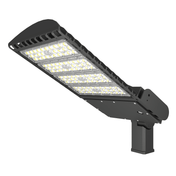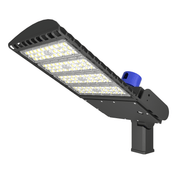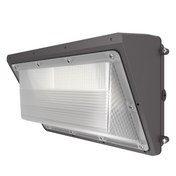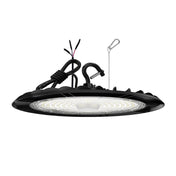Introduction
In the dynamic world of sports and live events, the role of lighting extends far beyond mere illumination. It is a silent architect of experience, shaping how athletes perform, fans engage, and broadcasts capture the magic of the moment. Today, LED stadium lights stand at the forefront of this transformation, replacing traditional lighting technologies like metal halide and sodium lamps with a solution that marries cutting-edge performance, intelligent control, and environmental responsibility.
Gone are the days when stadium lighting was limited by flickering, uneven brightness, and exorbitant energy costs. LED technology has redefined what’s possible, turning arenas into versatile spaces that can adapt to the unique demands of football, basketball, concerts, and more. Whether it’s a sold-out Champions League match or a star-studded music festival, LED stadium lights are the unsung heroes that elevate every aspect of the event. This blog delves into the ways
LED stadium lights are transforming arenas, exploring their high-lumen capabilities, smart features, energy-saving benefits, market impact, and future potential.
High Lumen Output: Illuminating the Action with Precision
The Critical Role of High Lumens in Arenas
For sports venues, brightness isn’t just about visibility—it’s about precision, consistency, and delivering a seamless experience for everyone involved. High lumen output is the foundation of this, ensuring that every corner of the field or court is evenly lit, free from shadows that could obscure a player’s movement or a fan’s view.
In the age of 4K and 8K ultra-high-definition broadcasts, the demand for superior lighting has never been higher. Cameras require consistent, high-intensity light to capture crisp details, vibrant colors, and smooth motion. A single dark spot or glare can ruin a broadcast moment, disappointing millions of viewers worldwide. LED stadium lights, with their ability to produce thousands of lumens per fixture, meet these rigorous standards. For example, major events like the FIFA World Cup now mandate minimum illuminance levels of 2000 lux for HD broadcasts, a requirement that LED technology fulfills with ease.
Athletes, too, rely on high-lumen lighting to perform at their best. In fast-paced sports like soccer or basketball, split-second decisions depend on clear visibility of the ball, teammates, and opponents. High-lumen LED lights eliminate blind spots, allowing players to react quickly and accurately. For fans in the stands, bright, uniform lighting creates an immersive experience, making it easy to follow the action from any seat—whether they’re in the front row or the upper tiers.
Technological Breakthroughs Driving High Lumen Performance
The impressive lumen output of modern LED stadium lights is the result of continuous innovation in LED chip design, thermal management, and optical engineering. LED chip manufacturers have made leaps in increasing luminous efficacy—the amount of light produced per watt of electricity. Today’s top-tier LED chips can achieve efficacies of over 200 lumens per watt, a significant jump from the 100-150 lumens per watt of just a decade ago.
Companies like Cree and Osram are at the forefront of this innovation. Cree’s XLamp MK-R LED chips, for instance, deliver exceptional brightness and color consistency, making them a popular choice for high-end stadium lighting fixtures. These chips use advanced materials like gallium nitride (GaN) to enhance light extraction efficiency, ensuring that more of the energy consumed is converted into usable light rather than heat.
Thermal management is another key factor in maintaining high lumen output. LEDs generate heat, and excessive heat can degrade performance and shorten lifespan. To address this, manufacturers use advanced cooling solutions such as heat sinks made from high-conductivity aluminum, phase-change materials, and even active cooling systems. For example, Philips’ SportsStar Gen2 fixtures feature a One-piece die-cast aluminum housing with optimized heat dissipation fins, allowing them to operate at peak lumen output for up to 50,000 hours without significant degradation.
Real-World Impact: Arenas Transformed by High-Lumen LEDs
The difference high-lumen LED lights make is evident in stadiums around the world. Take the Tottenham Hotspur Stadium in London, one of the most advanced sports venues globally. The stadium uses over 3,000 LED fixtures with a total output of 57 million lumens, delivering illuminance levels of 2,500 lux—well above the requirements for 4K broadcasts. This lighting system ensures that every match, whether played day or night, is captured with stunning clarity, and players enjoy optimal visibility.
Another example is the Mercedes-Benz Stadium in Atlanta, home to the NFL’s Falcons and MLS’s United. The stadium replaced its original metal halide lights with LED fixtures that produce 40% more light while using 60% less energy. Fans and players alike noticed the difference: the field is brighter, shadows are minimal, and the overall atmosphere is more engaging. Broadcasters also praised the upgrade, noting that the improved lighting made for sharper, more vibrant broadcasts.
Smart Lighting: The Brain Behind the Arena Experience
Intelligent Control Features Redefining Versatility
One of the most exciting aspects of LED stadium lights is their ability to be Intelligent controlled. Unlike traditional lighting, which is often limited to on/off switches, LED systems offer a range of smart features that make arenas more versatile and efficient. Dimming, color temperature adjustment, and scene mode switching are just a few of the capabilities that are transforming how venues are used.
Dimming allows venue managers to adjust light intensity based on the event. For a pre-game warm-up, the lights can be dimmed to 50% to save energy and create a relaxed atmosphere. During the main event, they can be cranked up to full brightness for optimal visibility. Color temperature control is equally valuable. For daytime events, a cool white light (5000K-6000K) mimics natural sunlight, reducing eye strain for players and fans. For evening concerts or special events, a warm white light (3000K-4000K) creates a cozy, inviting ambiance.
Scene mode switching takes versatility to the next level. Venues can program preset lighting scenes for different events: a soccer scene with uniform field lighting, a basketball scene with focused lighting on the court, or a concert scene with dynamic color changes and light shows. The Staples Center in Los Angeles, for example, uses smart LED lighting to switch between Lakers basketball games, Kings hockey games, and concerts seamlessly—all with the touch of a button.
How Smart Systems Work: Sensors, IoT, and AI
The magic of smart LED stadium lighting lies in the integration of sensors, Internet of Things (IoT) technology, and artificial intelligence (AI). Sensors placed throughout the arena collect data on factors like ambient light, occupancy, and temperature. This data is transmitted via IoT networks to a central control system, which uses AI algorithms to make real-time adjustments.
Ambient light sensors, for instance, detect changes in natural light. On a sunny day, the system might dim the LED lights slightly to save energy while maintaining the required illuminance level. Occupancy sensors can detect when certain areas of the stadium are empty (such as unused seating sections) and turn off or dim the lights in those areas. Temperature sensors monitor the heat generated by the LED fixtures, triggering cooling systems if necessary to prevent overheating.
Remote control is another key benefit of smart systems. Venue managers can control the lighting from anywhere using a smartphone, tablet, or computer. This means they can adjust settings, troubleshoot issues, or switch between scenes without being physically present in the stadium. For example, if a last-minute event change is needed, the lighting can be adjusted remotely in minutes.
The Transformative Impact of Smart Lighting
Smart LED lighting is revolutionizing arena operations and experiences. For venue managers, it reduces operational costs by optimizing energy use and simplifying maintenance. Predictive maintenance features, powered by AI, can detect potential issues (such as a failing fixture) before they cause a problem, allowing for timely repairs and minimizing downtime.
For fans, smart lighting enhances the event experience. Dynamic light shows during pre-game ceremonies or halftime breaks create a sense of excitement and spectacle. In some arenas, lighting is synchronized with music or scoreboard updates, creating a fully immersive sensory experience. For example, during a goal celebration at a soccer match, the lights might flash in the team’s colors, amplifying the crowd’s excitement.
Athletes also benefit from smart lighting. Customizable lighting scenes can be tailored to specific sports, ensuring that the lighting meets the unique needs of each game. For example, in tennis, the lighting can be adjusted to minimize glare on the court, allowing players to see the ball more clearly.
Energy Efficiency: Sustainability Meets Performance
The Science Behind LED Energy Savings
Energy efficiency is one of the most compelling reasons for arenas to switch to LED lighting. Unlike traditional lighting technologies, which waste a significant amount of energy as heat, LEDs convert almost all of the energy they consume into light. This fundamental difference in how they produce light makes them far more efficient.
To put it in perspective: a typical metal halide lamp has an efficacy of around 70-100 lumens per watt, while a modern LED lamp can achieve 150-200 lumens per watt. This means that an LED fixture can produce the same amount of light as a metal halide fixture while using half the energy. For large stadiums, which can have hundreds or thousands of lighting fixtures, the energy savings are substantial.
Another factor contributing to LED energy efficiency is their long lifespan. LEDs can last up to 50,000 hours, compared to just 10,000-20,000 hours for metal halide lamps. This means fewer replacements, reducing both the cost and environmental impact of manufacturing and disposing of Lighting fixtures.
Quantifying the Savings: Real-World Data
The energy savings of LED stadium lights are not just theoretical—they’re proven in real-world applications. Let’s take a medium-sized stadium with 200 lighting fixtures as an example. If each fixture is a 1000W metal halide lamp, the total power consumption is 200,000W (200kW). Assuming the lights are used for 10 hours a day, 300 days a year, the annual energy consumption is 200kW x 10h x 300d = 600,000 kWh. At an average electricity cost of $0.15 per kWh, the annual lighting cost is $90,000.
Now, replace those metal halide lamps with 500W LED fixtures that produce the same amount of light. The total power consumption drops to 100,000W (100kW). The annual energy consumption becomes 100kW x 10h x 300d = 300,000 kWh, and the annual lighting cost is $45,000. That’s a 50% reduction in energy costs—savings of $45,000 per year. For larger stadiums with more fixtures, the savings can be in the hundreds of thousands of dollars annually.
The environmental impact is equally significant. A 50% reduction in energy consumption means a 50% reduction in carbon emissions (assuming the electricity comes from a fossil fuel source). For the medium-sized stadium example, this translates to a reduction of approximately 300 metric tons of CO2 per year—equivalent to planting over 7,500 trees.
Long-Term Benefits: Economics and Sustainability
The long-term benefits of LED stadium lights extend beyond immediate energy savings. Lower energy costs free up funds for other arena improvements, such as upgrading seating, concessions, or sound systems. The longer lifespan of LEDs also reduces maintenance costs, as there’s no need to replace bulbs as frequently. This is especially important for large stadiums, where replacing hundreds of high-mounted fixtures can be time-consuming and expensive.
From a sustainability perspective, LED lighting helps arenas meet their environmental goals. Many sports organizations, such as the NFL and FIFA, have committed to reducing their carbon footprint, and switching to LED lighting is a key step in achieving that. Arenas that adopt LED lighting can also earn green building certifications like LEED, which can enhance their reputation and attract environmentally conscious events and sponsors.
For example, the Allianz Arena in Munich, home to Bayern Munich, switched to LED lighting in 2017. The upgrade reduced the stadium’s lighting energy consumption by 60% and cut CO2 emissions by 1,200 metric tons per year. The arena also uses the LED lights to create dynamic light shows, enhancing the fan experience while maintaining its commitment to sustainability.
Market Landscape: Growth, Competition, and Innovation
Global Market Growth and Trends
The global LED stadium lighting market is experiencing robust growth, driven by the increasing demand for energy-efficient lighting, the rise of high-definition broadcasts, and the expansion of sports infrastructure worldwide. According to a report by Grand View Research, the global sports lighting market size was valued at $1.8 billion in 2022 and is expected to grow at a compound annual growth rate (CAGR) of 10.2% from 2023 to 2030. LED lighting is expected to account for the majority of this growth, as more arenas and sports facilities make the switch from traditional technologies.
Asia Pacific is a key growth market, driven by rapid urbanization and the construction of new sports venues for events like the 2022 Beijing Winter Olympics and the 2023 Asian Games. North America and Europe are also significant markets, with many existing arenas undergoing retrofits to LED lighting. The demand for smart LED lighting is particularly strong in these regions, as venue managers seek to enhance the fan experience and improve operational efficiency.
Key Players and Their Offerings
The LED stadium lighting market is highly competitive, with several major players dominating the industry. Philips Lighting (Signify) is a leader in the space, offering a range of high-performance LED fixtures and smart lighting systems. Their SportsStar Gen2 series is designed specifically for large sports venues, with features like high lumen output, IP66 weather resistance, and compatibility with smart control systems.
Osram is another major player, known for its innovative LED chips and lighting solutions. Their SYLVANIA sports lighting products are used in stadiums around the world, delivering exceptional brightness and color accuracy. Cree, a pioneer in LED technology, offers a range of high-efficacy LED chips and fixtures that are popular for stadium applications.
In addition to these international brands, there are also many regional players making their mark. For example, in China, companies like Opple Lighting and NVC Lighting offer cost-effective LED stadium lighting solutions, catering to the growing demand in the Asia Pacific market. These companies often focus on providing customizable solutions to meet the unique needs of local venues.
Competition and Innovation Focus
Competition in the LED stadium lighting market is fierce, with companies competing on factors like performance, price, and innovation. Performance metrics such as lumen output, efficacy, color rendering index (CRI), and lifespan are critical differentiators. Companies are also investing heavily in research and development to improve their products, with a focus on increasing efficacy, reducing size and weight, and enhancing smart features.
Innovation in smart lighting is a key area of competition. Companies are developing more advanced control systems that integrate with other arena technologies, such as security systems, HVAC, and scoreboards. AI-powered predictive maintenance is another growing trend, allowing venue managers to proactively address issues before they impact operations.
Price competition is also a factor, especially in emerging markets. However, most venue managers are willing to pay a premium for high-quality LED lighting that offers long-term energy savings and reliability. As the technology matures and production volumes increase, the cost of LED stadium lighting is expected to continue to decline, making it more accessible to smaller venues.
Future Outlook: What’s Next for LED Stadium Lighting?
Technological Advancements on the Horizon
The future of LED stadium lighting is bright, with several exciting technological advancements on the horizon. One area of focus is increasing the efficacy of LED chips even further. Researchers are exploring new materials and designs, such as quantum dot LEDs and micro-LEDs, which have the potential to achieve efficacies of 300 lumens per watt or more. This would result in even greater energy savings and smaller, more efficient fixtures.
Another trend is the integration of LED lighting with other emerging technologies, such as 5G and virtual reality (VR). 5G will enable faster, more reliable data transmission, allowing for more complex smart lighting systems with real-time control. VR integration could allow fans to experience games from virtual perspectives, with the lighting in the virtual environment synchronized with the real stadium lighting.
Li-Fi (Light Fidelity) is another emerging technology that could be integrated with LED stadium lighting. Li-Fi uses light waves to transmit data, offering faster speeds and greater security than Wi-Fi. In a stadium setting, Li-Fi could provide high-speed internet access to thousands of fans simultaneously, enhancing the in-stadium experience.
Expanding Application Scenarios
LED stadium lighting is no longer limited to traditional sports venues. Its versatility and efficiency are making it popular in a range of new applications. For example, esports arenas, which host competitive video gaming events, require precise lighting to ensure that players can see their screens clearly and that broadcasts capture the action effectively. LED lighting is ideal for this, as it can be adjusted to minimize glare and provide uniform illumination.
Outdoor event spaces, such as music festivals and cultural events, are also adopting LED stadium lighting. The dynamic color and scene control features allow event organizers to create stunning visual displays, enhancing the atmosphere for attendees. Even public parks and recreational areas are using LED stadium lighting to illuminate sports fields and outdoor courts, making them accessible for evening use.
Industry Standards and Regulations
As the LED stadium lighting market continues to grow, industry standards and regulations are becoming increasingly important. Organizations like the International Electrotechnical Commission (IEC) and the Illuminating Engineering Society (IES) are developing standards for sports lighting, covering factors like illuminance levels, uniformity, and color rendering. These standards ensure that LED lighting products meet the rigorous requirements of sports venues and broadcasts.
Governments around the world are also implementing regulations to promote energy efficiency, which is driving the adoption of LED lighting. For example, the European Union has banned the sale of certain types of inefficient lighting, including some metal halide lamps, making LED lighting the default choice for many applications. These regulations are expected to become even stricter in the coming years, further accelerating the shift to LED stadium lighting.
Conclusion
LED stadium lights are more than just a lighting solution—they are a transformative technology that is reshaping the way we experience sports and live events. From their high-lumen output that ensures crystal-clear broadcasts and optimal player performance to their smart control systems that enhance versatility and efficiency, LED lights have set a new standard for arena lighting.
The energy-saving benefits of LED lighting are equally impressive, reducing costs for venue managers and helping to create a more sustainable future. As the market continues to grow and innovate, we can expect to see even more advanced features, such as integration with 5G and VR, and expanded applications in esports and outdoor events.
For arenas looking to stay competitive in the modern world, switching to LED lighting is no longer an option—it’s a necessity. It’s an investment that pays off in improved experiences for fans and athletes, lower operational costs, and a reduced environmental footprint. As we look to the future, LED stadium lights will continue to be at the heart of arena transformation, illuminating the way for the next generation of sports and live events.








